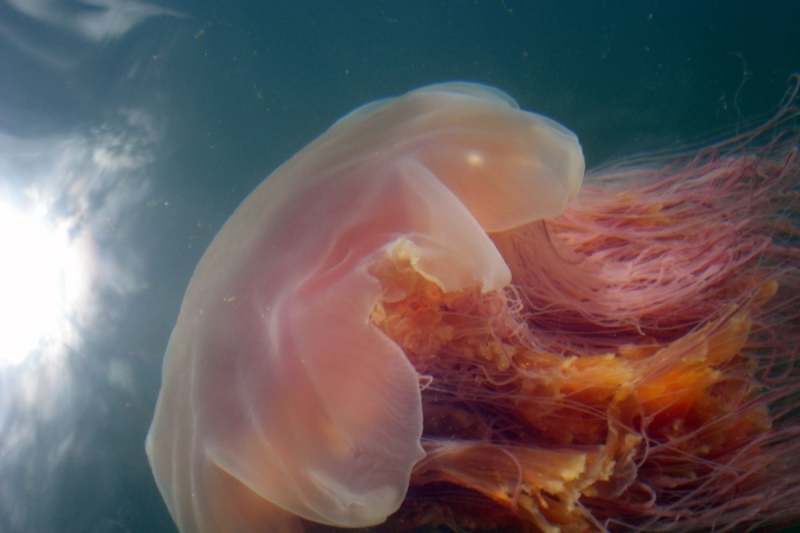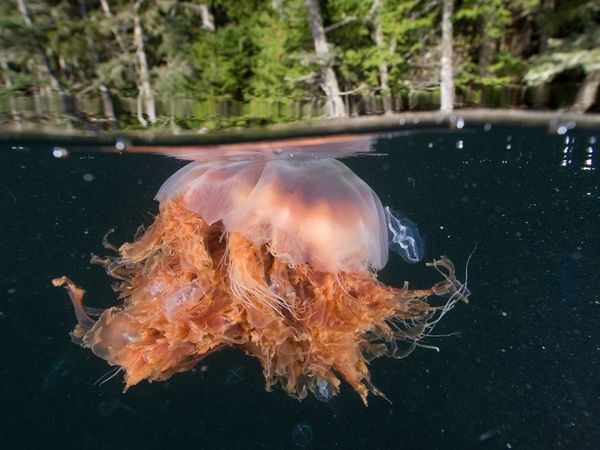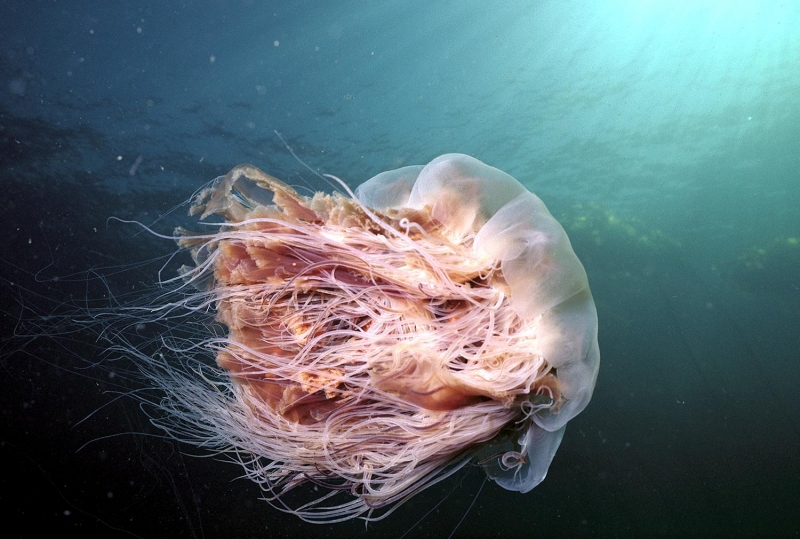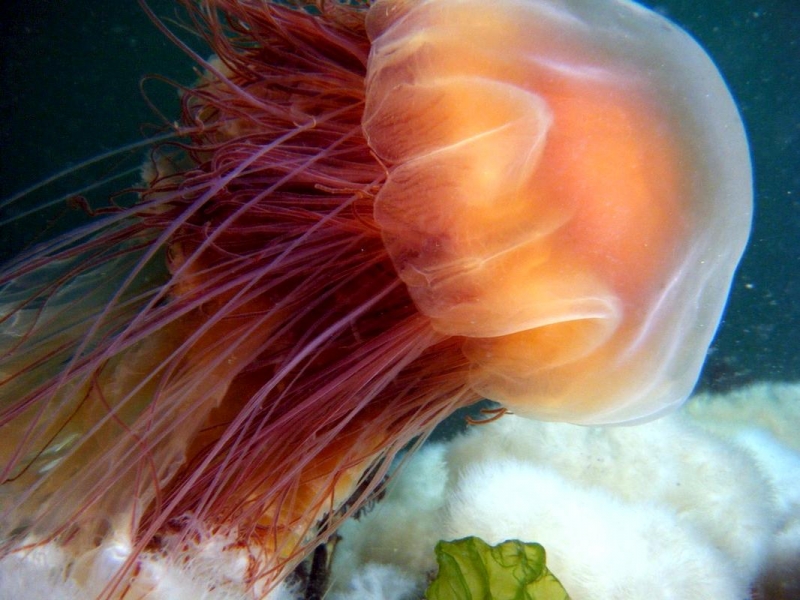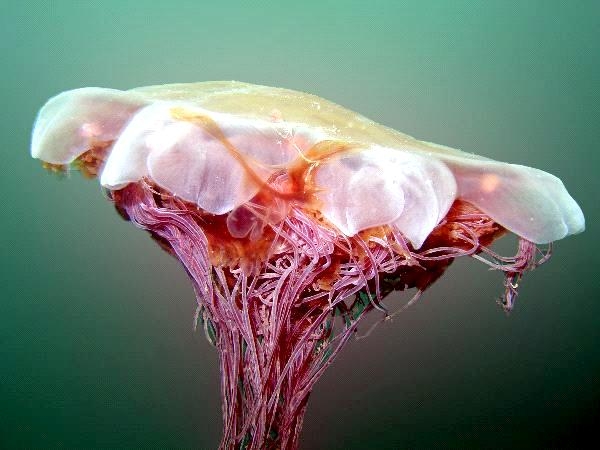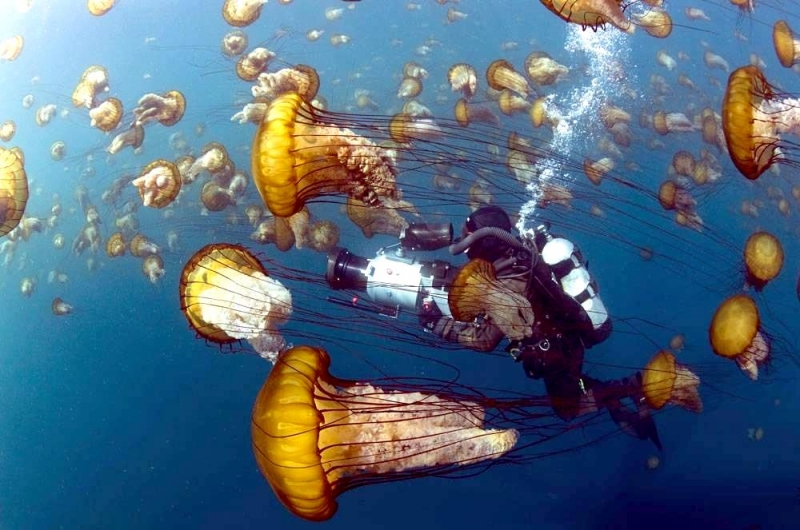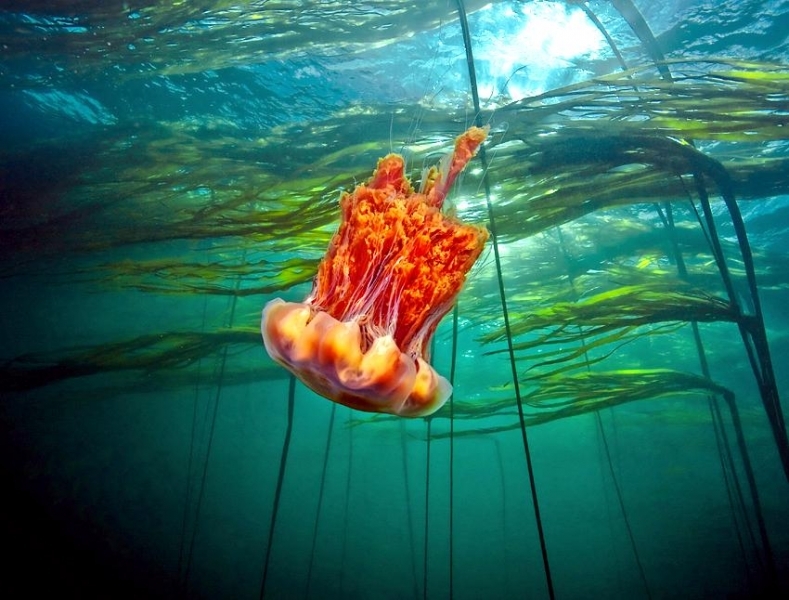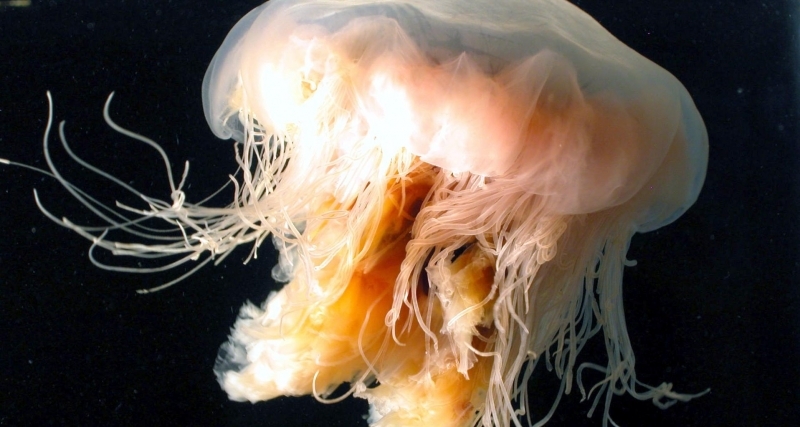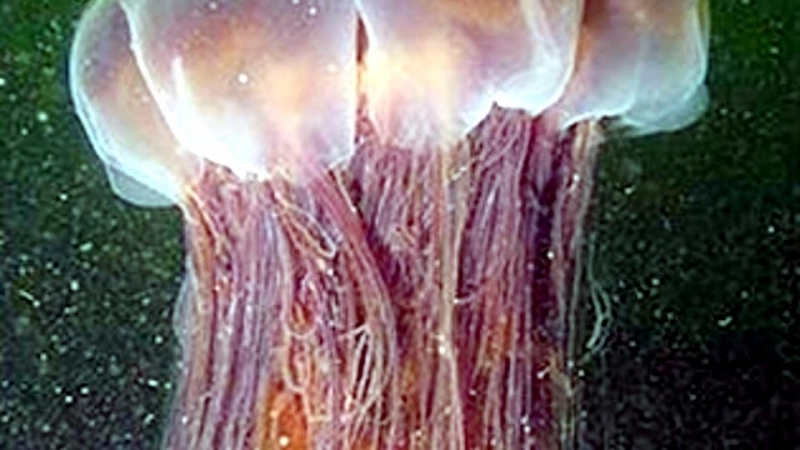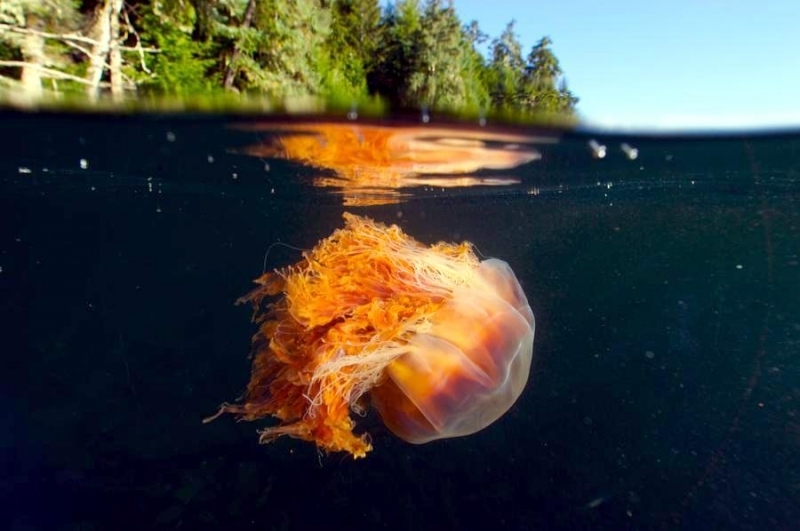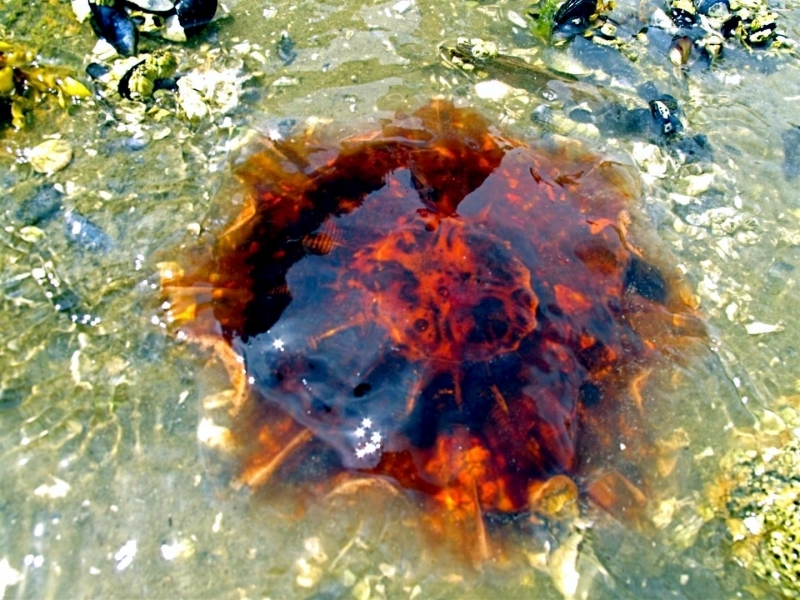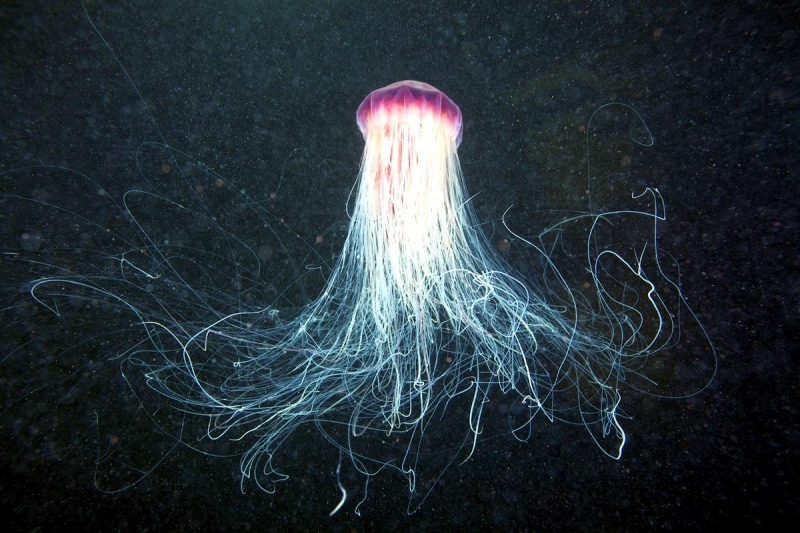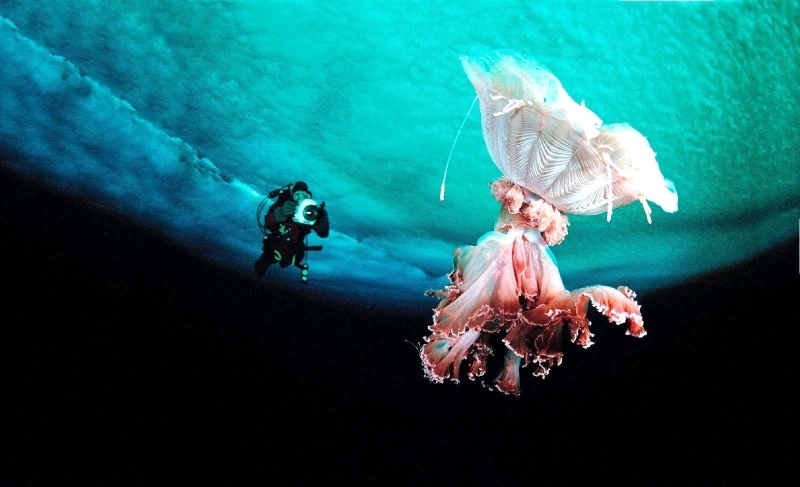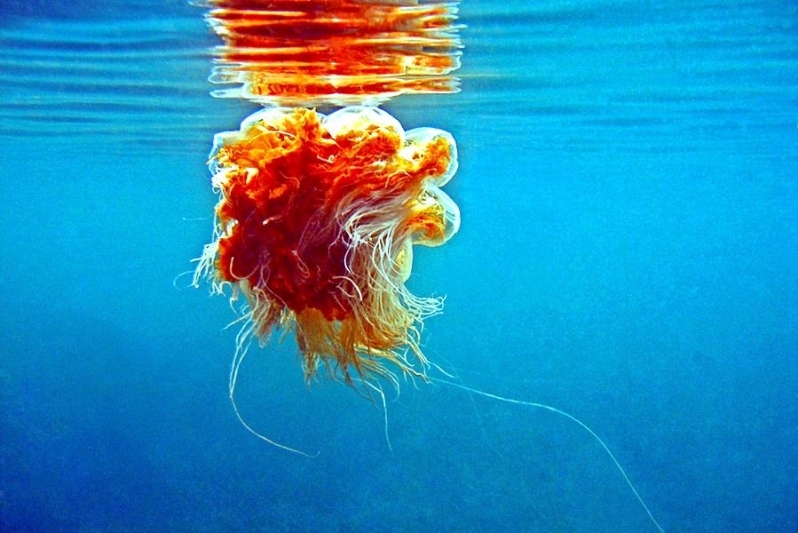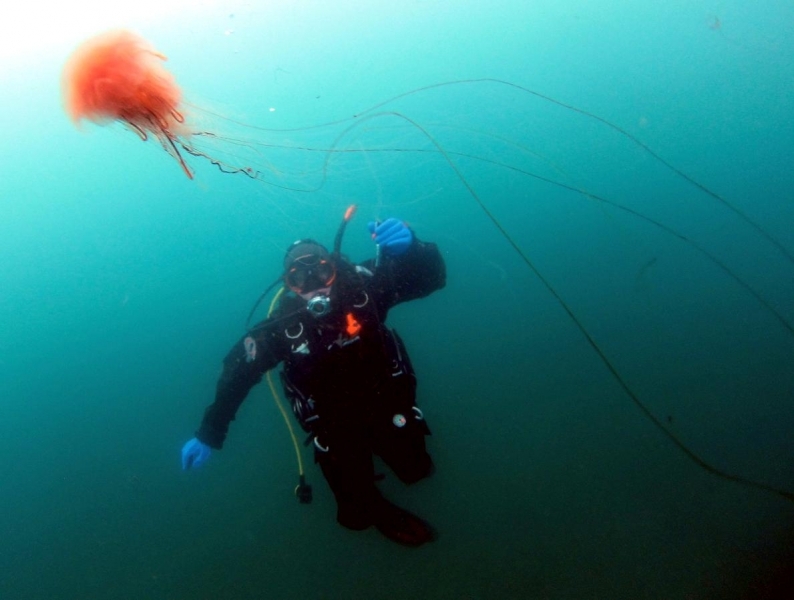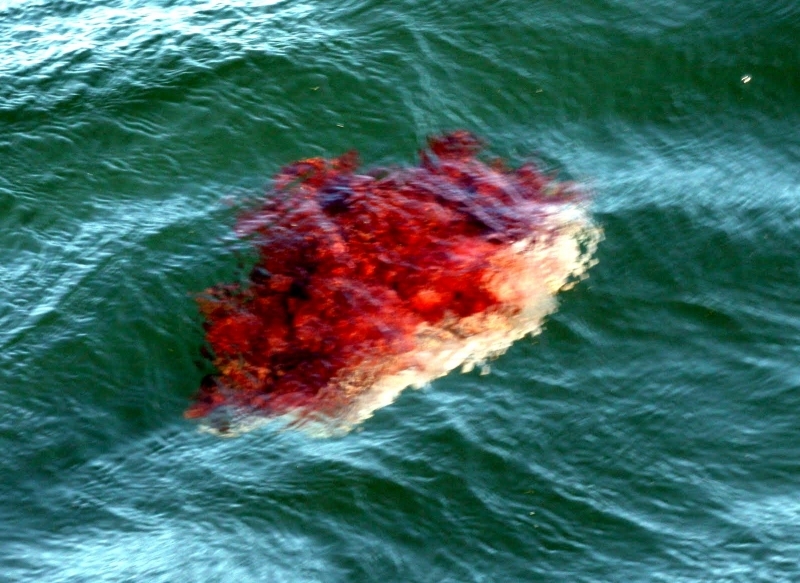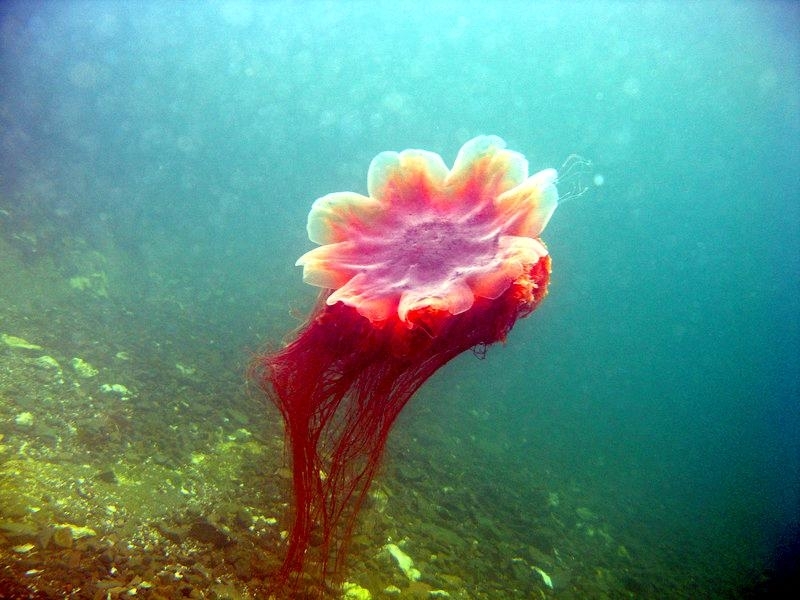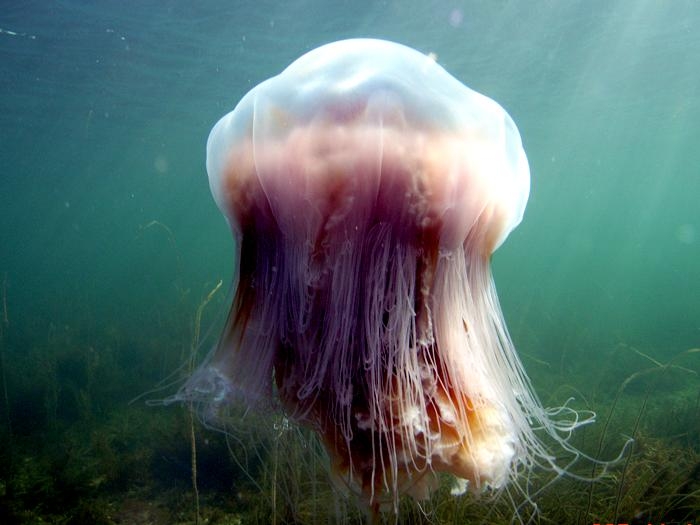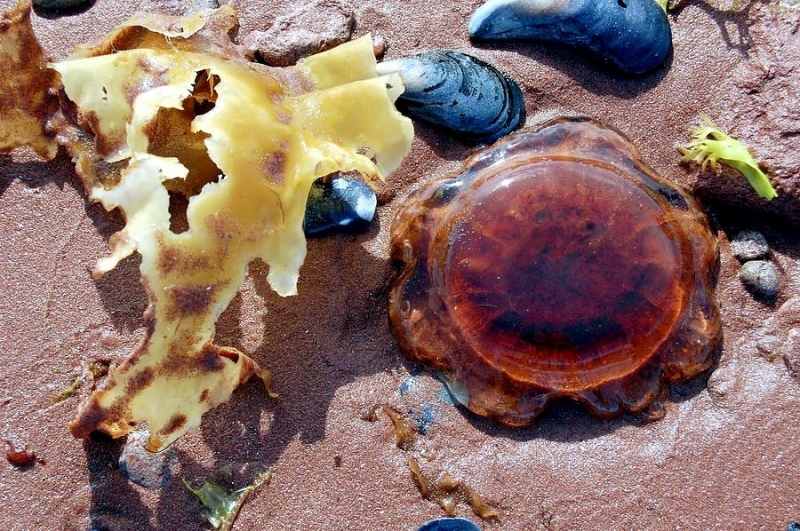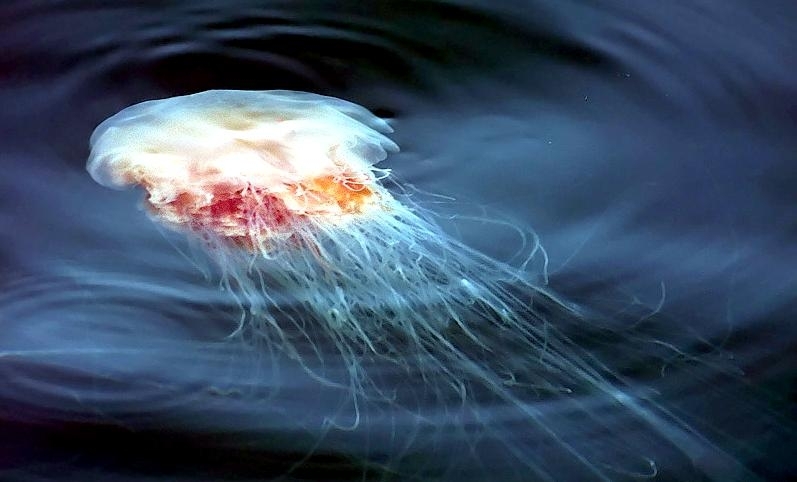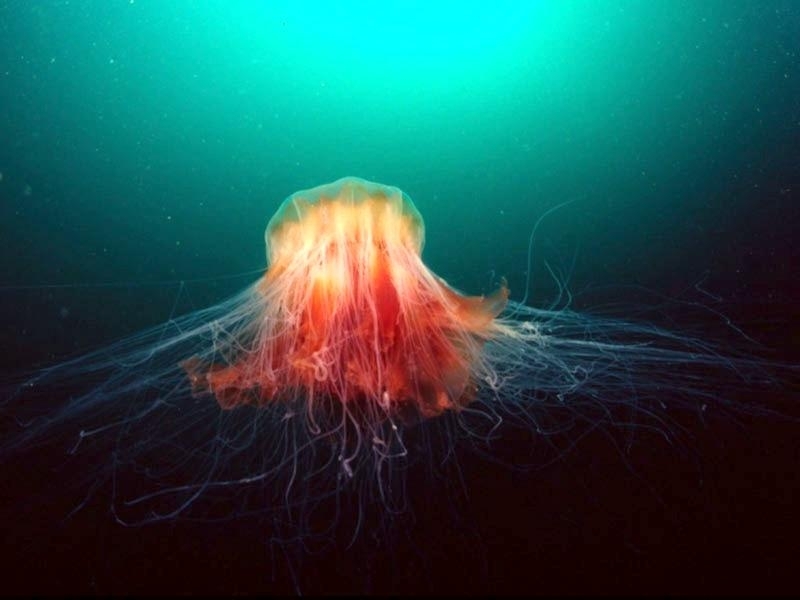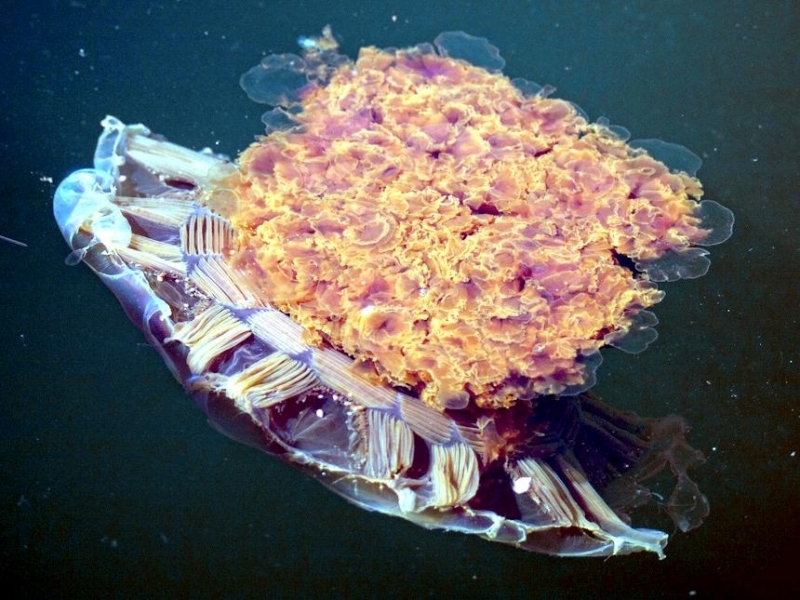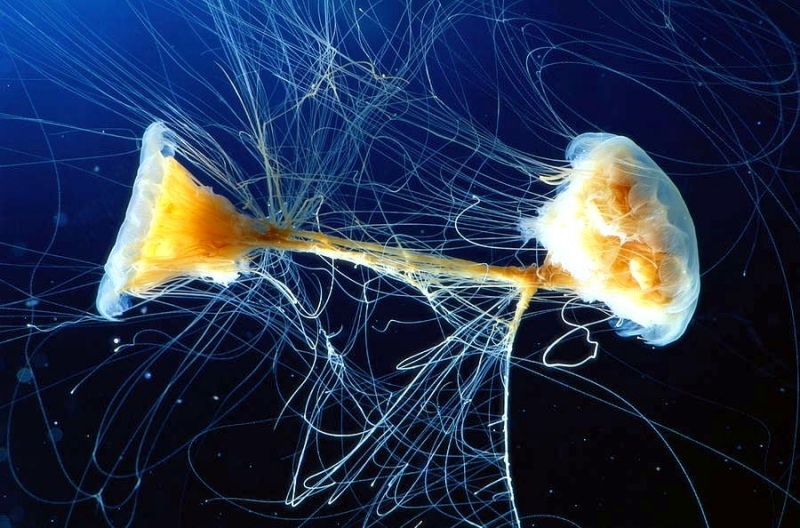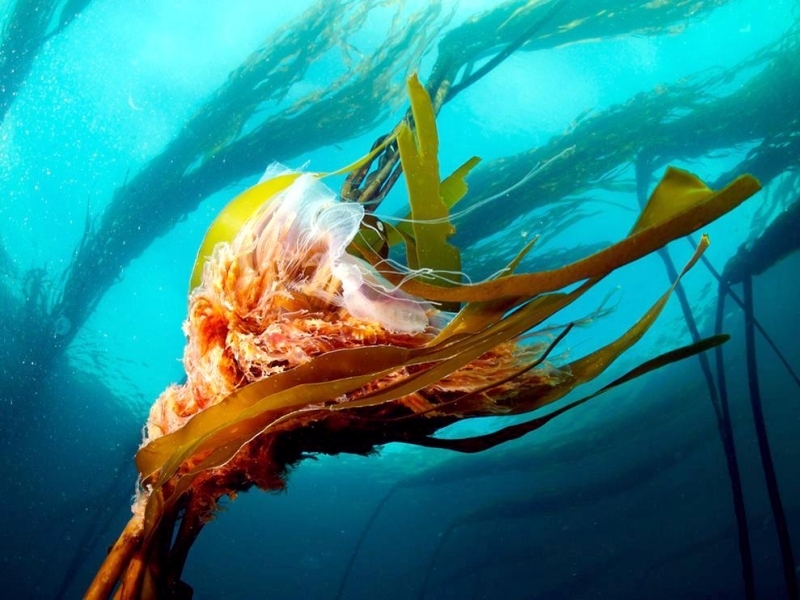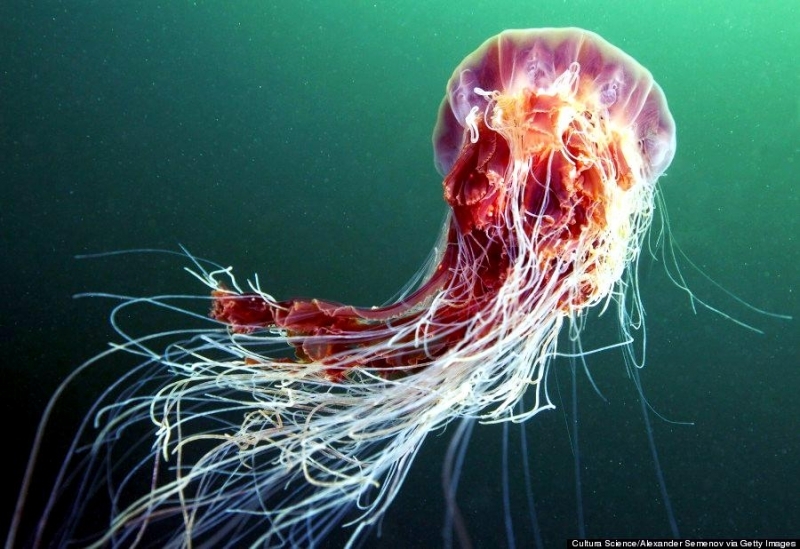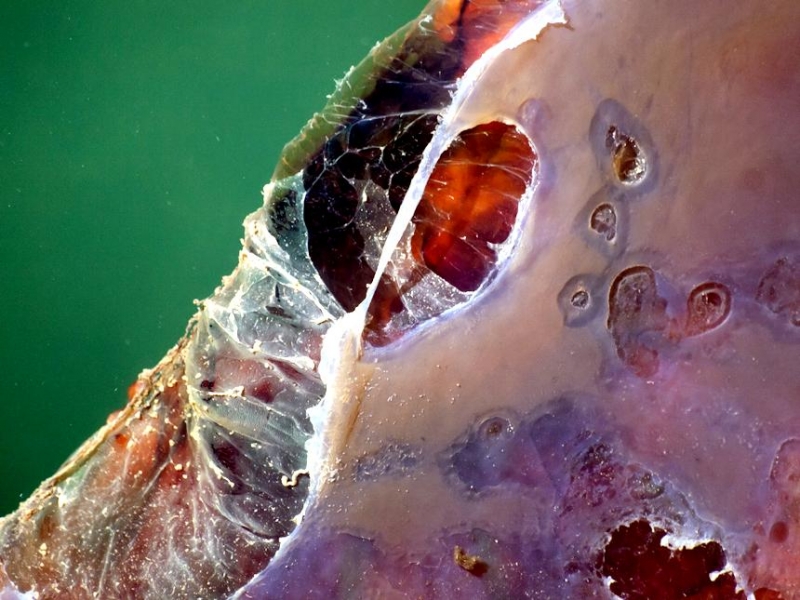“Cyanea capillata”
Right from the start, the proper scientific name for these animals is “Sea Jelly” not “Jellyfish”. They are invertebrates and not a fish nor do they have a backbone. The Lion’s Mane Sea Jelly is the world’s largest sea jelly, their bells can be over 8 feet across. They have a mass of thin tentacles that resemble a Lion’s Mane, which is where their name originates. Reports of tentacle size in Lion’s Mane Sea Jelly also known as the “Hair Sea Jelly”, vary from 30 to 120 feet. Either way, their tentacles extend a long way and one should give them a very wide berth. This sea jelly has 8 groups of tentacles with 70-150 tentacles in each group. The color of the Lion’s Mane Sea Jelly changes as it grows. Small Lion’s Mane Sea Jellies under 5 inches in bell size are pink & yellow. Between 5-18 inches in size, the Lion’s Mane Sea Jelly is reddish to yellowish-brown and as they grow past 18 inches, they become a darker reddish-brown. Like all other sea jellies, the Lion’s Mane has a short lifespan so all these color changes may happen in a period of about 1 year.
Lion’s Mane Sea Jellies are found in cooler waters, usually less than 68 degrees F. They may be found in the North Atlantic Ocean, including the Gulf of Maine and off the coasts of Europe and in the Pacific Ocean. Lion’s Mane Sea Jellies eat plankton, fish, small crustaceans and even other sea jellies. They can spread their long, thin tentacles out like a net and descend into the water column, capturing prey as they go. Reproduction occurs sexually in the medusa stage. Under its bell, the Lion’s Mane Sea Jelly has 4 ribbon-like gonads which alternate with 4 very folded lips. The Lion’s Mane has separate sexes. The eggs are held by oral tentacles and are fertilized by sperm. Larvae called planula develop and settle on the ocean bottom, where they develop into polyps. Once in the polyp stage, reproduction can occur asexually as polyps divide into disks. As the disks stack up, the uppermost disk swims away as an ephyra, which develops into the medusa stage. Encountering a Lion’s Mane Sea Jelly probably won’t be lethal, but it won’t be fun either. A Lion’s Mane Sea Jelly sting usually results in pain and redness in the area of the sting. The sticky tentacles of a Lion’s Mane can sting even when it is dead, so give Lion’s Mane Sea Jelly found washed up on the beach a wide berth. In 2010, a Lion’s Mane Sea Jelly washed ashore in Rye, NH where it stung well over 100 unsuspecting bathers.







